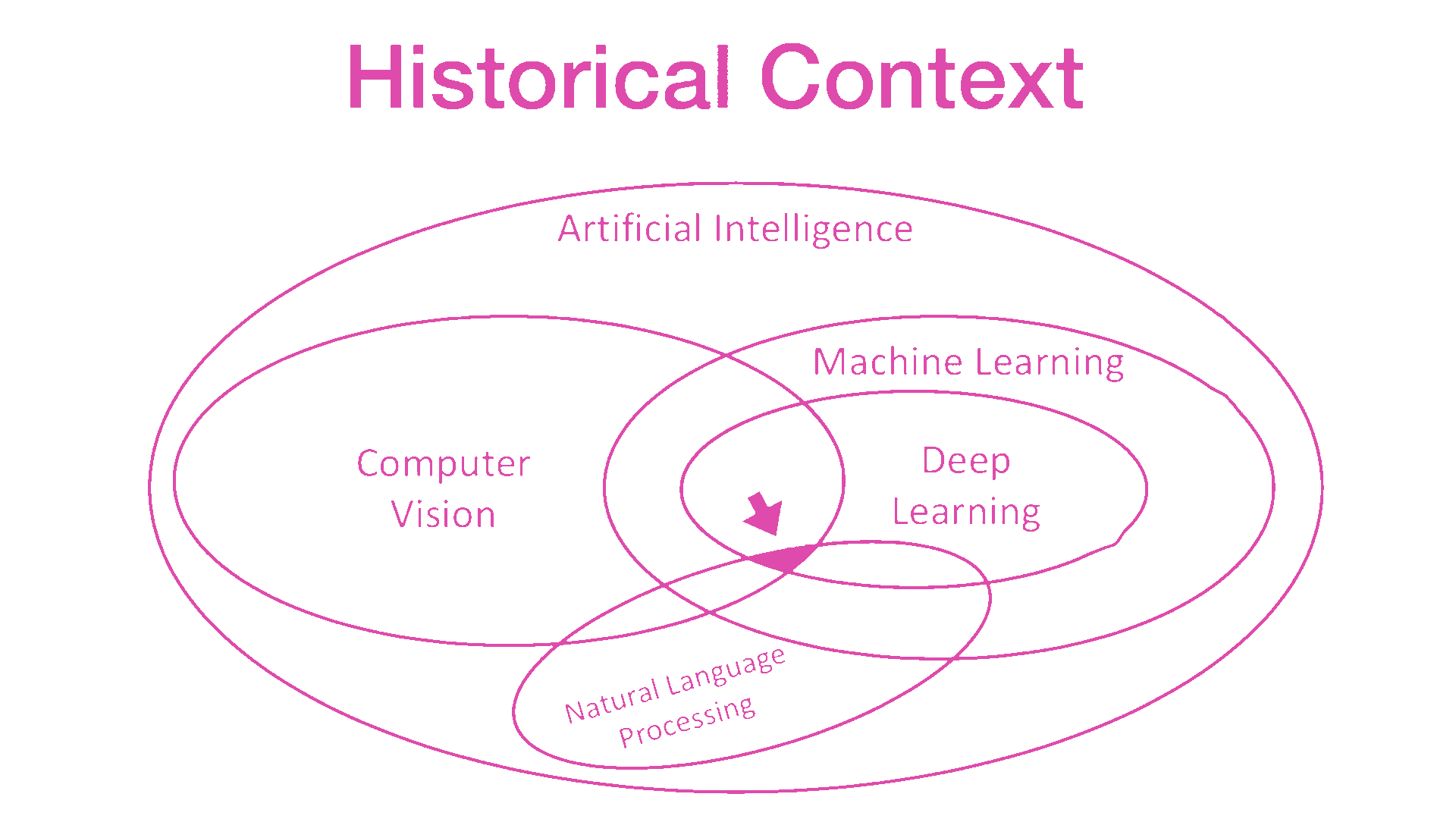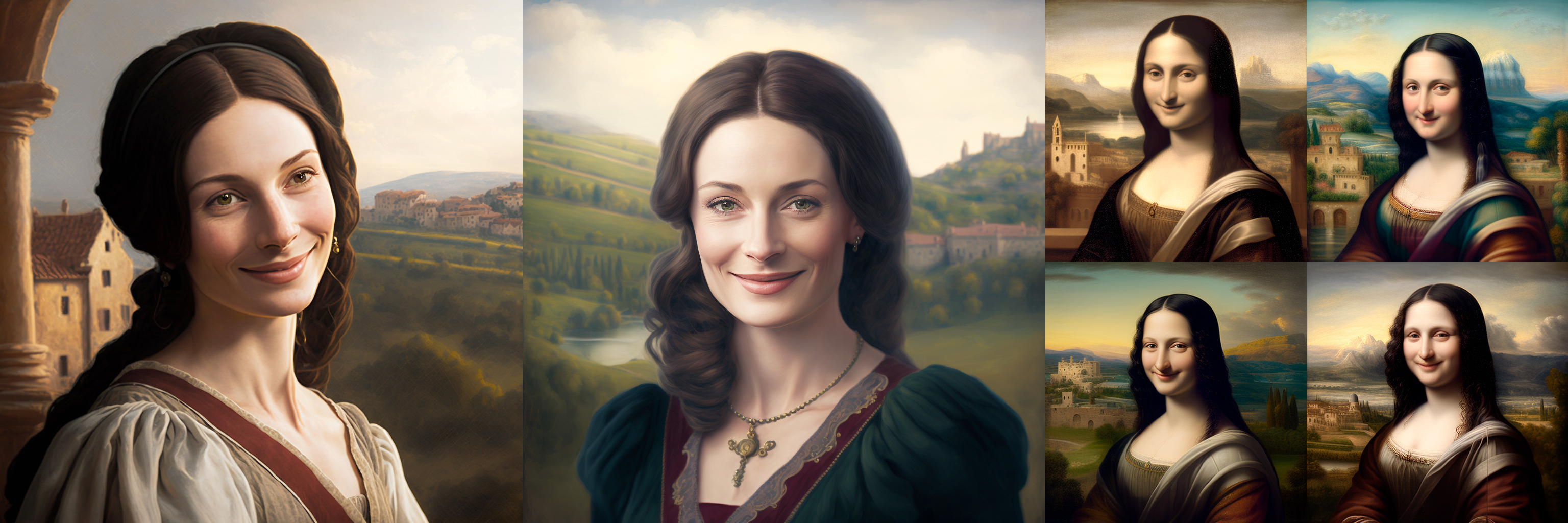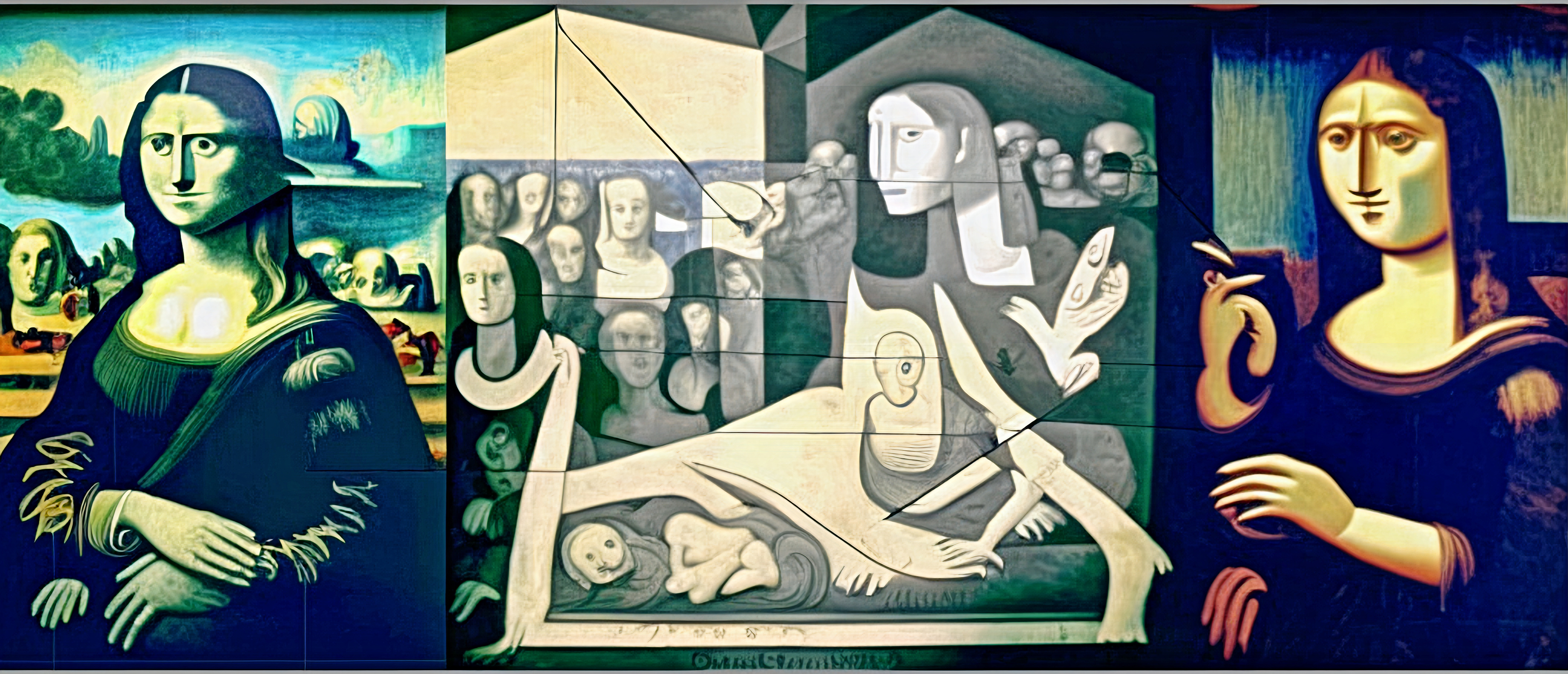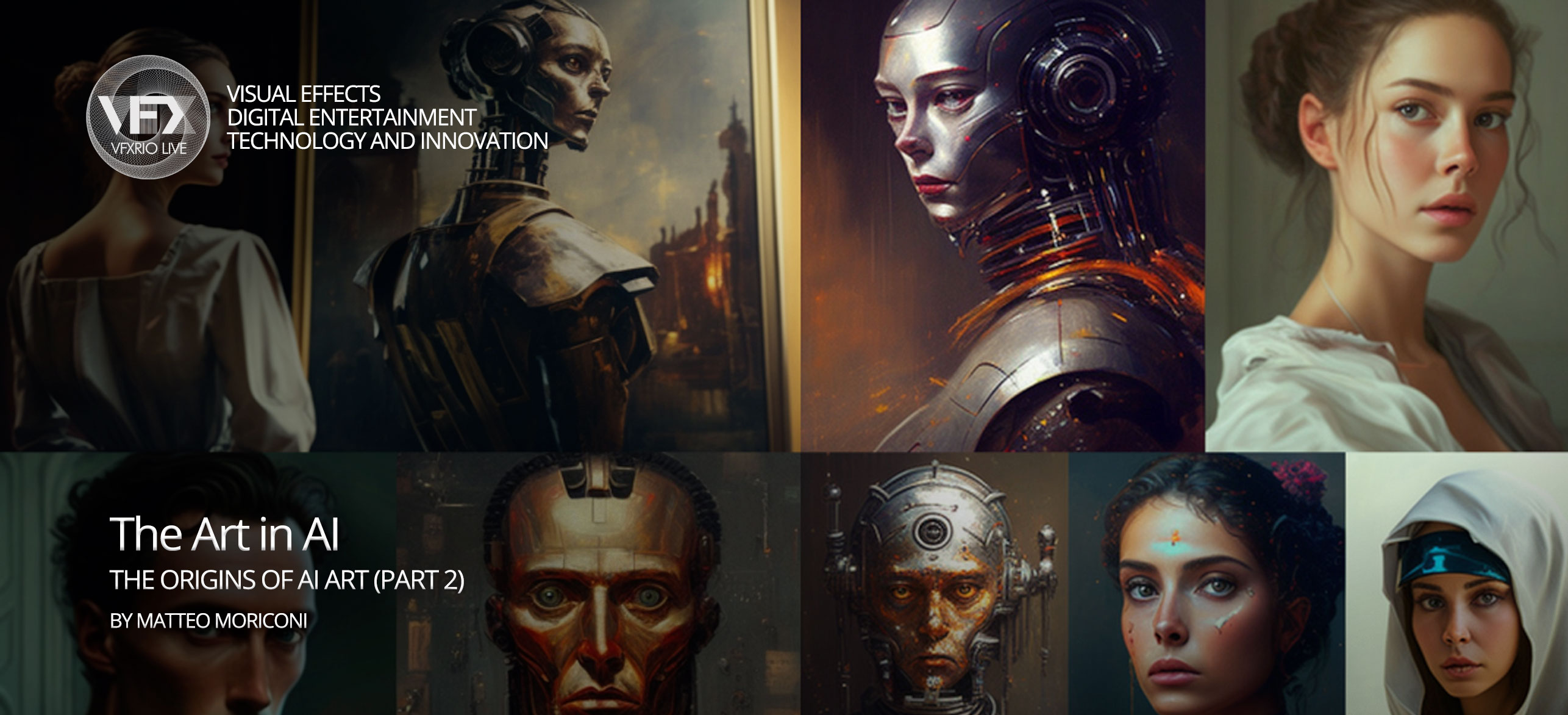The Art in Artificial Intelligence
The Origins of AI Art (Part 2)
by Matteo Moriconi in collaboration with Luiz Velho, Noah Charney and Bernardo Alevato

ArtinAI: INDEX | INTRODUCTION | DIGITALLY MANIPULATED ART - PART 1 | ORIGINS OF AI ART - PART 2 | AN ENGINE FOR THE IMAGINATION - PART 3

AI art is a convergence of five technologies that are decades old in practice, and far older in theory. As Wired magazine wrote, "AI image generators were born from the marriage of two separate technologies. One was a historical line of deep learning neural nets that could generate coherent realistic imagines, and the other was a natural language model that could serve as an interface to the image engine. The two were combined into a language-driven image generator. Researchers scraped the internet for all images that had adjacent text, such as captions, and used billions of these examples to connect visual forms to words, and words to forms." Once the software "learned" from images that had effectively been "tagged" by the humans who uploaded them, they could begin to identify and categorize on their own images with no tags or human-added metadata.
If we imagine a Ven diagram, AI art is at the center of artificial intelligence, computer vision, machine learning, deep learning, and natural language processing, all of which is geared toward creating digital art (although it is being geared elsewhere, too, such as creating coherent texts that appear to have been conceived of and written by a human).

While the use of technology, of computers, is new, the process is theoretically as old as people have been making art. For example, take Mona Lisa. Leonardo da Vinci had a "prompt" of sorts when he was commissioned by Francesco del Giocondo to paint a portrait of his wife, Lisa Gherardini. The prompt might have gone something like this: "elegant Renaissance portrait of Lisa Gherardini smiling enigmatically against a Tuscan landscape in soft focus." Leonardo would not have consciously articulated the prompt words, beyond of course the contracted commission to portray Mona Lisa. But his invenzione process, the Italian term for the conceptualization of an artwork before you begin to create it, was including attributes and aspects that were, essentially, prompts. Leonardo kept his invenzione secret, within his mind, perhaps sharing some aspects of his creative thought process with his pupils and assistants, but otherwise it was his intellectual property. Today, an AI artist might keep his or her prompts secret-although in principle no two AI artworks will ever be identical.

"La Gioconda" di Leonardo da Vinci (1503).

Mona Lisa by midjourney - prompt: "elegant Renaissance portrait of Lisa Gherardini smiling enigmatically, in a Tuscan landscape, with soft focus"
The difference with AI is that now someone with no artistic ability or materials at all can call upon the diverse might of all of the images available online to mix and magic them together and create a new digital image. Computers have taken over the other half of the artistic process: disegno. If invenzione was the Renaissance term for conceptualizing an artwork, disegno referred to the physical creation of the work, based on the "prompts" in the artist's invenzione.
Back in the studios of Renaissance artists, "prompts" took the form of the master (say, Leonardo da Vinci), instructing his apprentices and assistants in how to collectively make paintings that would be sold as Leonardo originals. The most desirable members of a master's studio were those who could mimic the style of the master seamlessly, so you couldn't tell where the master's work began and the assistant's ceased. There are many versions of Mona Lisa, but only one confirmed as by Leonardo. Others may be by him, or have emerged under his supervision from his studio. Others, like Mona Vanna, the so-called "Nude Mona Lisa," are confirmed as having been made by his assistants-that one by Salai. The "prompt" given to all members of his studio was "in the style of Leonardo da Vinci." If we imagine Mona Vanna in AI terms, the prompt might be "a nude Mona Lisa in the style of Leonardo da Vinci" and the software might come up with something like Salai's five-hundred-year-old oil painting.
In the past, this was normal, and it only shifted into forgery and fraud when someone outside of the main artist's studio, without the master's blessing, created a work in the style of someone else and tried to pass it off as by that person. There are numerous examples, including Baroque master Luca Giordano forging works in the style of Albrecht Dürer-and convincing one of his patrons to by it as a Dürer original (as described in The Art of Forgery by Noah Charney).
Until now, disegno, making manifest your artistic idea, has required immense artistic skill, like that of Salai, who trained with Leonardo. Now, it requires only access to an AI system.
It must be understood that you, the person using the AI and entering the prompts, are not actually creating digital art yourself. Your role is more like that of Francesco del Giocondo, the commissioner of a digital artwork. Instead of paying Leonardo 100 scuti or whatever he might charge, you pay a small subscription fee to Dall-e or some similar AI art site. The AI borrows ideas for invention from millions of images in its database, fishing them out of those fully stocked waters based on your prompt. And AI is also borrowing the artistic abilities of the original creators of those images and Frankensteining together an entirely new image reminiscent of those that match your prompt combination.
While this is no replacement for artists, AI art has democratized who can create digital images that may be beautiful and interesting. They will be technically original, unique, neither copies nor forgeries. They are useful and, as of now, the creator/prompter can hold copyright to them, using them as they like, in things like comic books or book covers or as product logos. The democratization means that anyone, even those without artistic ability of the funds to commission artists and illustrators, can "create" images of interest.

"La Gioconda" by midjourney - prompt: "Mona Lisa in Picasso style" generated after many generations
As we start to populate the internet with synthetic media, producing ever more AI art which is added to a database of online images that will have been exclusively human-made images before the advent of AI art, the result will be a huge amount of synthetic media fed back into the database, melting into the "noise." This means that new AI art will become ever more based on previous AI art creations, rather than human creations. What will this future AI look like and how will it differ from what we produce today, when the quantity of human-made images within the noise of data infinitely outnumbers the quantity of synthetic media? Depending on your point of view, this may pollute the noise with bad samples. How so? In a few decades, asking for a prompt for "Mona Lisa in the style of Picasso" will result in the AI latching onto a synthetic "style of Picasso" image, rather than a digital image of a real painting by Picasso, and use that to produce your "Mona Lisa in the style of Picasso." The result may be significantly less Picasso-like, since the prompt keeps referring back to AI creations that are Picasso-like. It would be a good precaution against this for AI developers to "lock in" as the primary reference points for prompt images by the original artists in question, so that future generations prompting "style of Picasso" will indeed receive Picasso as the point of departure and not a twentieth-generation synthetic AI creation, each of the 19 previous images having been based on AI "style of Picasso" images, each one of which is likely to have less of Picasso's own vibe to them. Now is the time to avoid "contaminating" the noise with synthetic media. The main AI platforms are aware of this issue and will hopefully take measures to prevent it.
ArtinAI: INDEX | INTRODUCTION | DIGITALLY MANIPULATED ART - PART 1 | ORIGINS OF AI ART - PART 2 | AN ENGINE FOR THE IMAGINATION - PART 3


